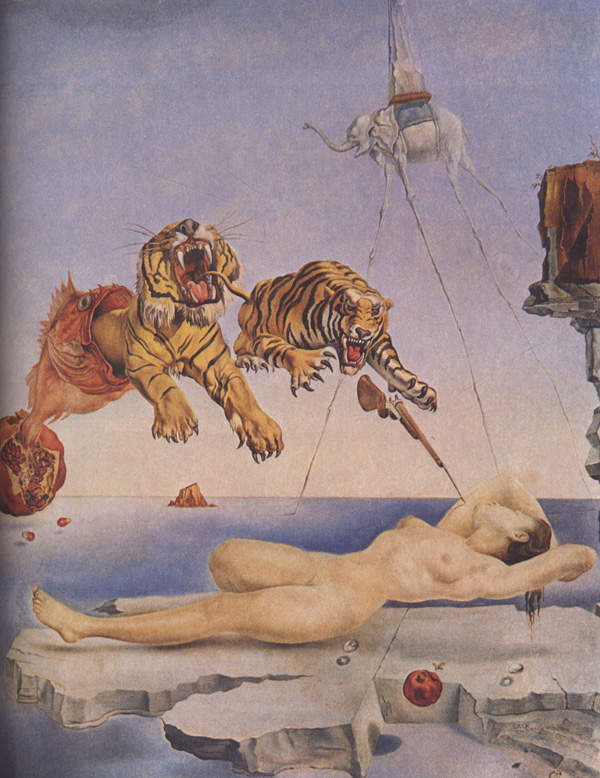

Author: Aoife Moriarty
Today marks the 25th anniversary of the death of one of surrealism’s most famous figures, Salvador Dalí.
As engaging and bewildering as his own work, the moustachioed prankster once said, “What is important is to spread confusion, not eliminate it”.
And bewilderment imbued with excitement is exactly what I felt, as I stood in front of the Dalí Theatre-Museum in Figueres as a child.
Like something straight out of a Lewis Carroll novel, giant eggs stand atop a bizarre brick red building with gold trims and oddly elongated shrubbery. An impressively surreal sight, by all accounts.
But that was nothing to the wonders held inside: from a portrait of his wife Gala which – with just a squint of the eye – cleverly morphs into Abraham Lincoln to a car in which it permanently rains, the museum is a fully interactive, 3D homage to the master of playful subversion.
But as much as Dalí’s work appeals to the inner child in all of us, his paintings have deep psychological connotations – he was, after all, greatly influenced by the work of Freud and the workings of the fragile human mind. Here, we look at the hidden meanings and symbolism behind some of his most famous works.
The First Days of Spring (1929)

Influenced by the ideas in Sigmund Freud’s The Interpretation of Dreams, The First Days of Spring marked Dalí’s first significant foray into surrealism.
The autobiographical painting is a complex collage of symbols and figures, representing some of Dalí’s most prominent desires and anxieties at the time.
A photo of the artist as a boy in the centre represents the painting’s subject, while a father and son in the distance refers to Dalí’s difficult relationship with his own paternal figure.
Sexual imagery also abounds, in the form of the phallic fish symbol that appears throughout later works and a highly sexualised couple on a miniscule postcard.
The Persistence of Memory (1931)

Dalí’s most famous painting and part of his Freudian phase, The Persistence of Memory is the work most closely associated with the artist.
The eyelashed creature in the centre of the painting represents that which is experienced in dreams, with no distinct shape or form. The jagged, shadowy coastline meanwhile, refers to the landscape of the artist’s native Catalonia, which appears throughout his life’s work.
However, much more ominous still are the iconic melting clocks, signifying the relativity of space and time and the perverse relationship between time and memory.
Apparition of Face and Fruit Dish on a Beach (1938)

By the time Dalí painted this intriguing and disturbing work, he had already officially parted ways with the surrealists.
The movement’s founder, André Breton, described Dalí’s works at this time as “entertainments on the level of crossword puzzles”.
Apparition of Face… is another of the optical illusions he painted around this time, depicting merged images from his unconscious – with themes of anxiety and decay pervading once more. Apart from the objects mentioned within the title, it also depicts a fourth image of a brown and white dog if you look long enough.
The Great Masturbator (1929)

Depicting Dalí’s conflicting feelings towards intercourse – his father allowed him to see graphic images of advanced venereal disease as a child – The Great Masturbator is a thought-provoking early work by the artist.
A woman resembling the Dalí’s future wife, Gala, appears on the right-hand side near a male crotch, suggesting sexual activity. While a swarm of insects on a head in profile symbolise the breakdown and decay Dalí had so closely associated with the act of sex ever since childhood.
Dream Caused by the Flight of a Bee Around a Pomegranate a Second Before Awakening (1944)

Dalí’s beloved wife Gala is the subject of this work, another of the surrealist artist’s famous dreamscapes, and with this one, all the clues are in the name.
The painting also depicts a pomegranate – a Christian symbol for Jesus’ suffering and resurrection – and two lunging tigers, which represent a bee about to wake the sleeping woman, while a bayonet represents its stinger.






